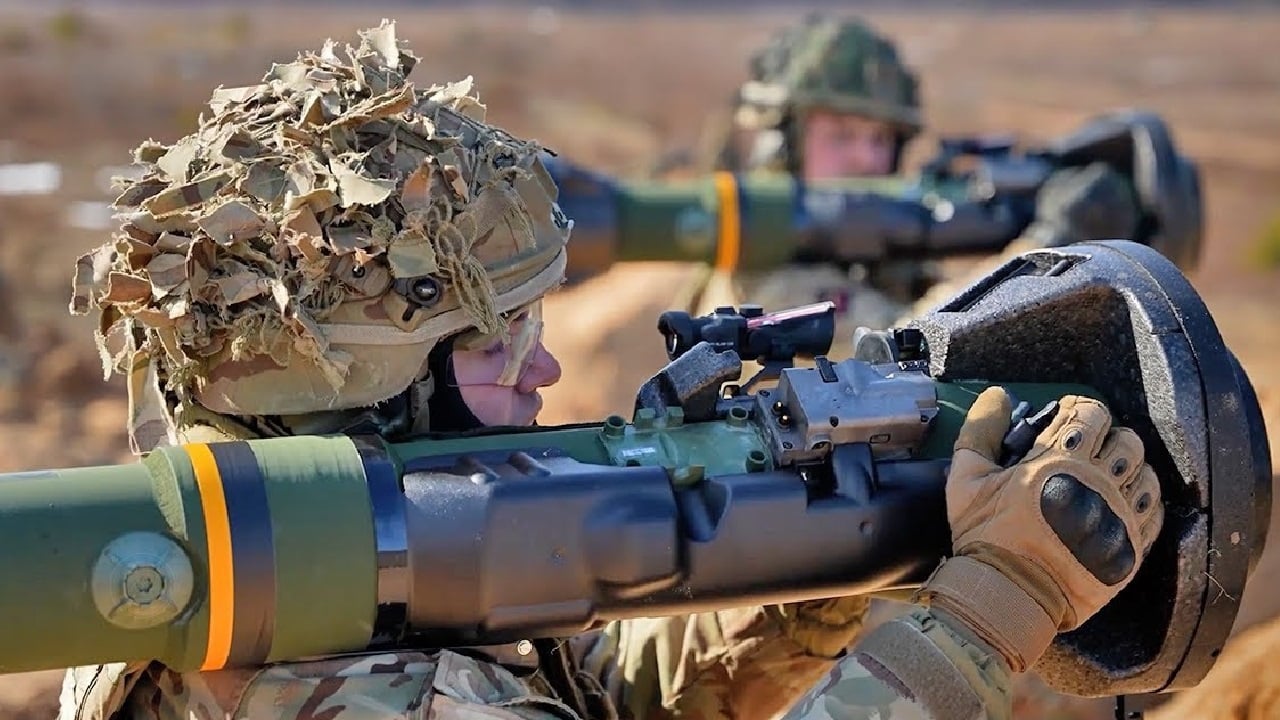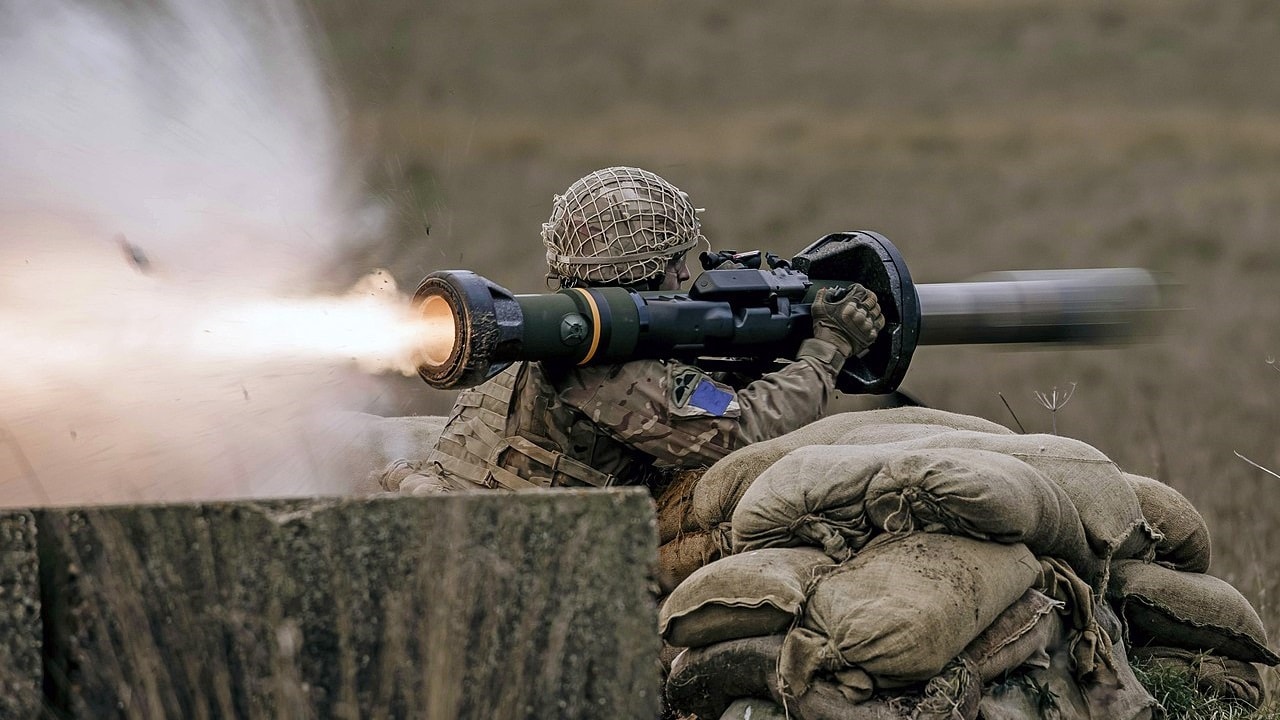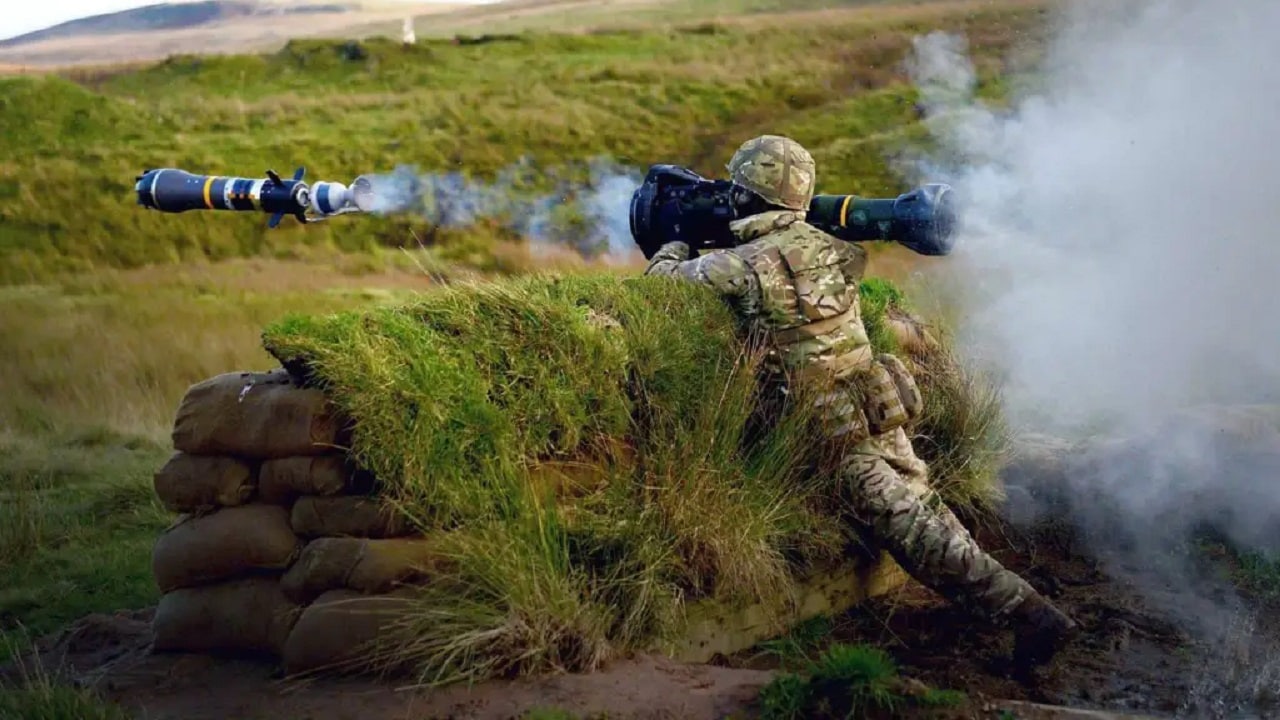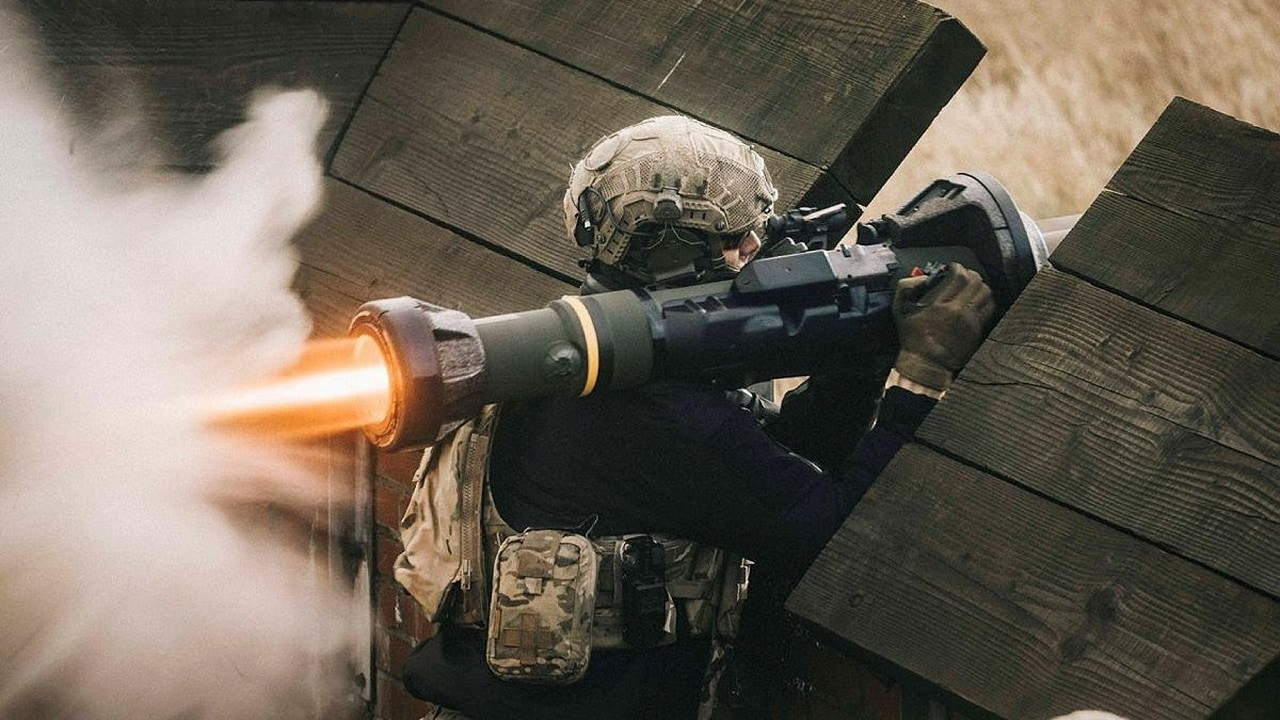Key Point: The NLAW (Next-generation Light Anti-tank Weapon) has become a game-changer in modern warfare, proving its effectiveness in Ukraine by enabling infantry to destroy tanks with minimal training and at close range.
-Designed by Sweden’s Saab in collaboration with the UK, the NLAW features dual attack modes—Overfly Top Attack for targeting weak tank hatches and Direct Attack for structures. Lightweight and cost-effective at $33,000 per unit, it can penetrate advanced armor, including explosive reactive defenses.
-Recognizing its success, France plans to integrate the NLAW into its military by 2025, reflecting a shift toward portable, high-impact anti-tank systems in modern defense strategies.
NLAW Tank Killer Coming to an Army Near You
Due to its unblemished battlefield success in Ukraine, the French Army has chosen the NLAW or Next-generation Light Anti-tank Weapon to transform its defensive armored warfare capabilities.
France has decided to buy a large shipment of NLAWs for dismounted infantry soldiers to defend themselves in modern combat after watching the Ukrainians use the weapon to take out numerous Russia tanks and armored vehicles.
By the end of 2025, the NLAW is expected to be standard issue for the French Army.
It’s a Basic Need for the French Army of the Future
The NLAW will eventually replace the aging ERYX wire-guided anti-tank missile in French infantry inventories. The French Army believes man-portable anti-tank systems like the NLAW, along with drones, robots, electronic warfare, and cyber capabilities, have a significant place on the modern battlefield.
Works Like a Javelin
The NLAW is designed by Sweden’s Saab Bofors Dynamics in a joint Swedish-British project. Early NLAWs were deployed in 2009. The NLAW can be compared to the American Javelin anti-tank weapon but it is lighter and can used at shorter range, which is important considering the Ukrainians and Russians are fighting in trench warfare.
Fire and Forget and One Shot One Kill
The NLAW is effective because it is a “fire and forget” system. This means that users do not have to watch the target as the missile is in flight. Soldiers can simply jump out of a prepared position, shoot the missile with its predicted line of sight system, and then quickly duck back down or move away. It is also a “one shot, one kill” model, as the weapon is thrown aside after launching the missile.

NLAW anti-tank missile.
Unleashing Hell From All Corners of the Battlefield
It is an all-weather day or night launcher. Saab’s director of product management, Lars-Örjan Hovbrandt, explained more. “You can fire down 45 degrees and can shoot from inside a building, from a basement or from the second floor of a building out of the range of most tanks. It can also destroy a tank if only a hatch or antenna is visible,” he said.
One Hour of Training
The other great thing about the NLAW is training on the system. It only takes about an hour to learn to operate the weapon. This made it popular at the beginning of the war and helped the Ukrainian defenders keep the Russian invaders from taking Kyiv. Now, it has proved its mettle at the front in Donbas, where a vast network of trenches necessitates the NLAW be used at close range.
Easy to Carry with Dual Modes
The launcher weighs 28 pounds, and the missile weighs only 14 pounds, so soldiers of all sizes and body types can carry it into battle.
The four-pound warhead can penetrate the toughest tank armor including explosive reactive armor.
There are two attack modes: Overfly Top Attack and Direct Attack. In Overfly Top Attack mode, the missile arcs upward and then dives down to hit a tank’s top hatch where the armor is weakest. Direct Attack is used for emplacements such as bunkers that need a direct, horizontal hit.
NLAW range is from 20 meters up to 800 meters.

A member of 2nd Battalion, The Parachute Regiment fires a Next-generation Light Anti-tank Weapon (NLAW)…Paratroopers have demonstrated the firepower that they could bring to bear during combat missions as the British Army’s global response force. ..As the culmination of a course in support weapons skills, paratroopers staged a firepower demonstration on Salisbury Plain. ..The Next-generation Light Anti-tank Weapon (NLAW) is the first, non-expert, short-range, anti-tank missile that rapidly knocks out any main battle tank in just one shot by striking it from above…NLAW utilises predicted line of sight guidance and has overfly top and direct attack modes, and it is easy to use, making it a valuable tank destroyer for light forces that operate dismounted in all environments, including built up areas…It also has night vision capability and is designed for all climate conditions and environments.
The UK Saw the Need for the NLAW Early
The British must be credited with a master stroke of foresight. In 2022, before the invasion, the United Kingdom sent 2,000 NLAWs to the Ukrainian army. Friendly forces were quickly trained on the system, and the weapon proliferated—an estimated 8,000 Ukrainian units had NLAWs in their arsenal.
The NLAW allows for different types of fighting. In urban areas, it can be fired from small rooms above the kill zone. In rural settings, it can be deployed from ground covered by trees or other types of cover and concealment.
These tactics are the essence of asymmetric warfare. The NLAW is truly a force multiplier.
Transformation of Infantry Tactics
The most significant factor that has led to the NLAW’s success is ease of use.
Ukraine has mostly a conscripted army. Many of the draftees had never fired a weapon before much less engaged something as big and dangerous as a tank. Russia believed that massive numbers of tanks and armored personnel carriers would shock the green Ukrainian troops and force them to retreat in droves.
That all changed with the NLAW. In just an hour, inexperienced soldiers can be transformed into fighters that unleash terror on tank crews.

NLAW anti-tank weapon. Image Credit: Creative Commons.
Portable and Affordable Cost
The next great feature of the NLAW is its portability. It is light enough to strap on your soldiers, and they can still carry a rifle. This allows the soldiers to shoot and scoot after discarding the weapon and still have a rifle to continue the fight.
The other redeeming quality of the NLAW is its cost. Each unit costs around $33,000 a shot, which is not a bad price considering it takes only one to destroy a tank that costs millions of dollars.
The NLAW has become a success story in Ukraine. France took note and ordered the weapon for its fighters. Look for more NATO countries to buy it. There will come a time when tank manufacturers will have to create ways to foil anti-tank missiles like the NLAW – whether that means better armor or electronic countermeasures to spoof an in-air launch. Russia does not have the time to transform its tank force in this manner.
Thus, the NLAW will continue to make the invaders pay the price.
About the Author
Brent M. Eastwood, PhD, is the author of Don’t Turn Your Back On the World: a Conservative Foreign Policy and Humans, Machines, and Data: Future Trends in Warfare, plus two other books. Brent was the founder and CEO of a tech firm that predicted world events using artificial intelligence. He served as a legislative fellow for U.S. Senator Tim Scott and advised the senator on defense and foreign policy issues. He has taught at American University, George Washington University, and George Mason University. Brent is a former U.S. Army Infantry officer. He can be followed on X @BMEastwood.

